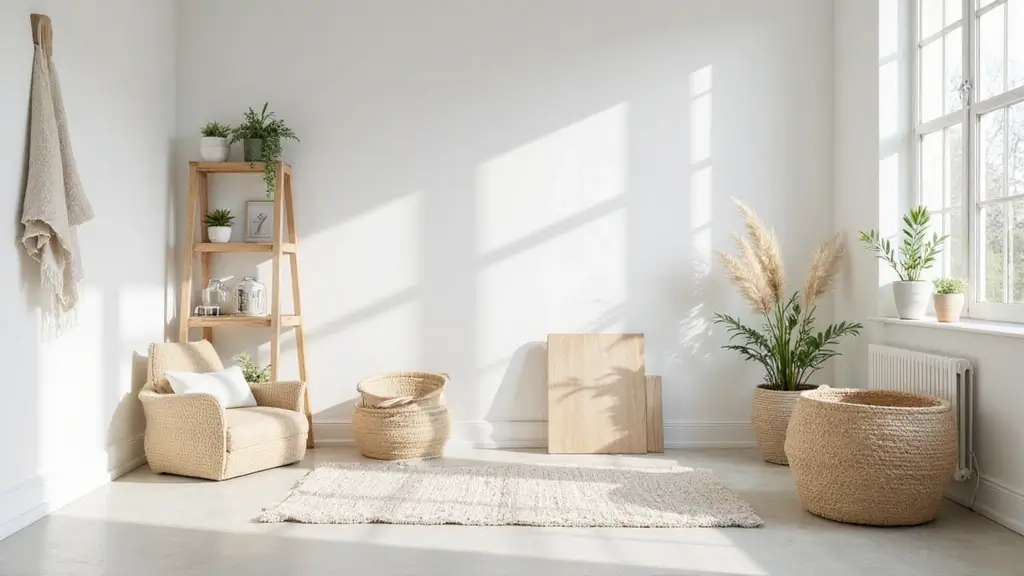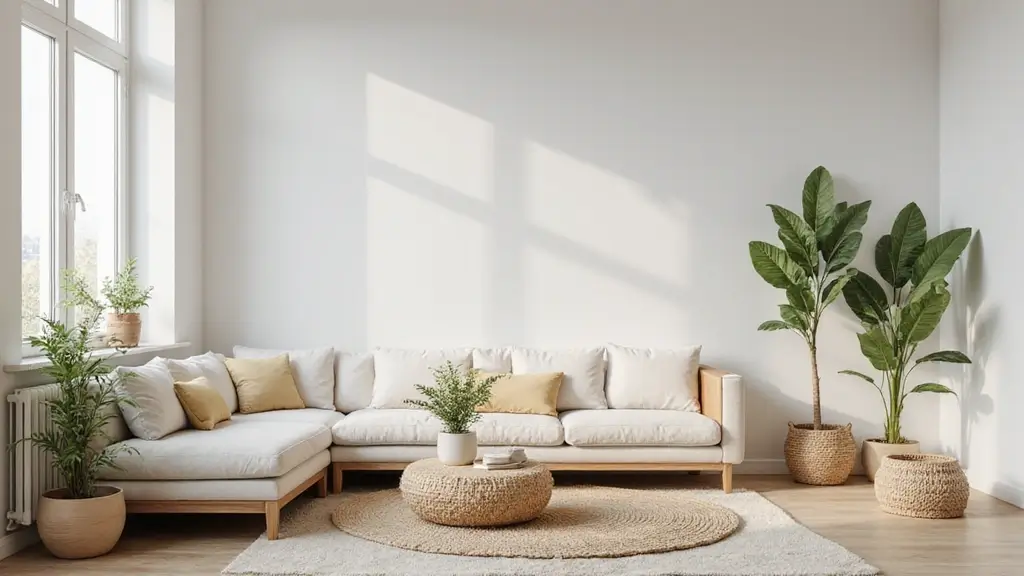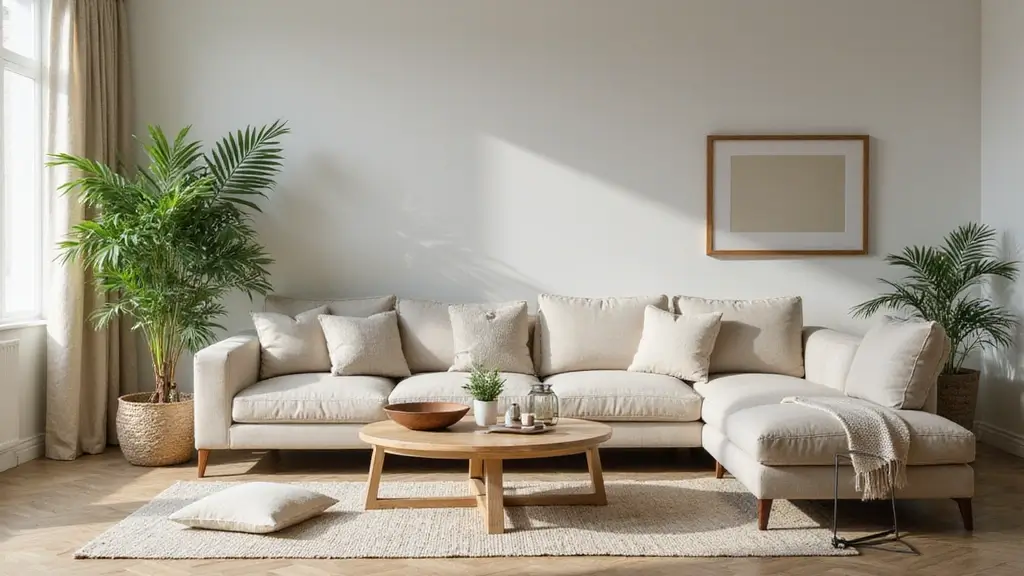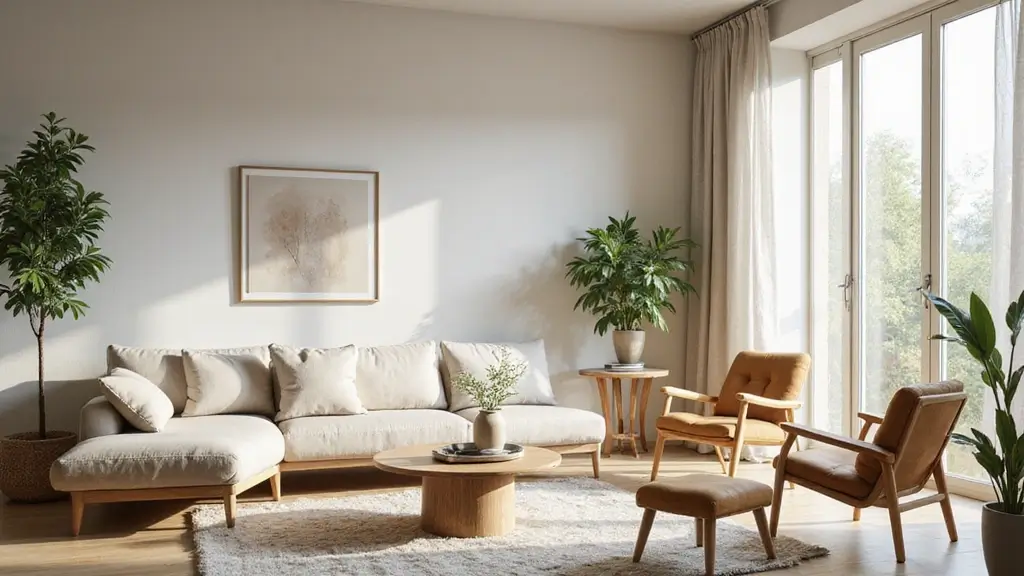Embracing a minimalist lifestyle is all about simplicity, functionality, and beauty.
Minimalist home plans don’t just offer a visually pleasing aesthetic; they also promote sustainable living by encouraging resourcefulness and reducing clutter.
Imagine a space where every piece serves a purpose, and sustainability is woven into the fabric of your daily life. From open concept living areas to the use of space-saving furniture, these designs showcase how modern and minimalist can coexist beautifully. Let’s explore some stunning inspirations that will transform your living environment into a sustainable haven.
1. The Open Concept Haven
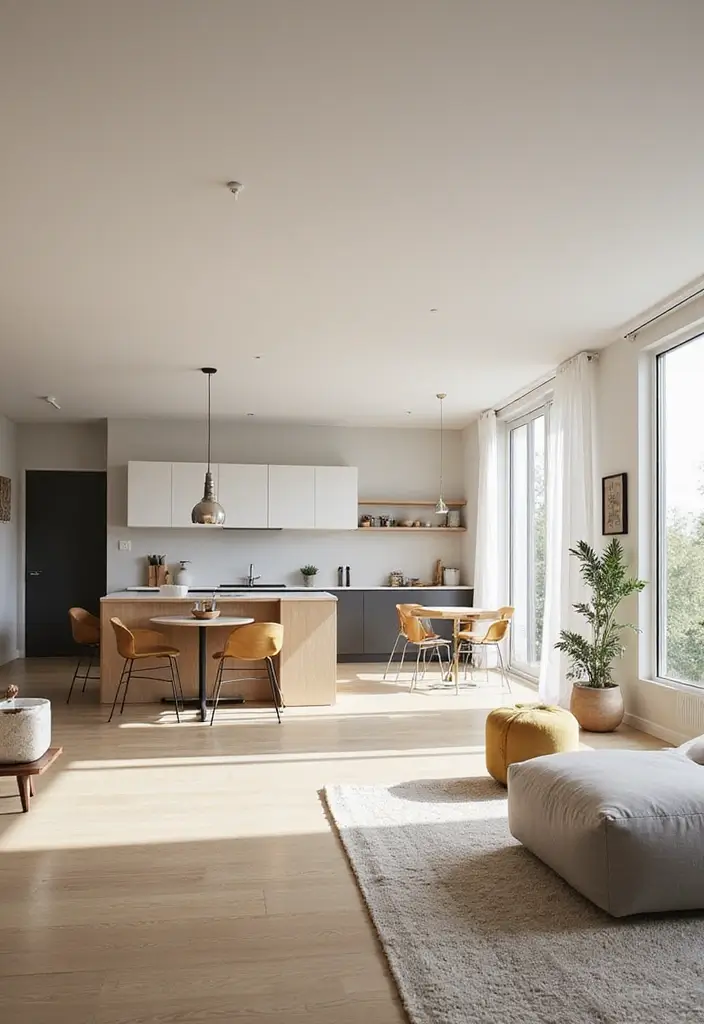
An open concept layout is the heart of minimalist design, creating a seamless flow between spaces.
In this type of home plan, the kitchen, dining, and living areas blend effortlessly, fostering interaction and a sense of spaciousness.
Consider using large sliding doors or multi-functional furniture that serves as both a divider and a decor piece. Think sleek cabinetry and a clean island that can serve as a dining spot.
The beauty of an open concept home is in its versatility; it adapts beautifully to gatherings or quiet evenings. A few design tips include:
– Choose neutral color palettes to enhance natural light.
– Incorporate natural materials like wood and stone for warmth.
– Use rugs to define different areas within the space.
This layout not only maximizes space but encourages a lifestyle centered on connection and sustainability.
2. Indoor-Outdoor Integration

Blurring the lines between indoors and outdoors is a hallmark of modern minimalist homes.
Large windows and sliding glass doors can create a seamless transition, allowing nature to become part of your living space. This approach not only enhances natural light but also promotes biophilic design, a concept that emphasizes our connection to nature.
To enhance this integration, consider incorporating pieces like the FDW | 4-Piece Patio Furniture Set. This outdoor wicker furniture set includes a coffee table and modern rattan chairs, making it perfect for creating a cozy seating area that invites relaxation. Its weather-resistant design ensures that it withstands outdoor elements, maintaining both style and functionality.
Additionally, think about integrating indoor plants, living walls, or even an herb garden in your kitchen. Design tips for this plan include:
– Use natural materials that complement the surrounding landscape.
– Select furniture that can endure outdoor conditions, like the mentioned patio furniture set, for patio spaces.
– Ensure that your outdoor areas are just as inviting as your indoors.
This integration fosters a serene environment, blending the beauty of the outdoors with the comfort of home.
3. Multi-Functional Rooms
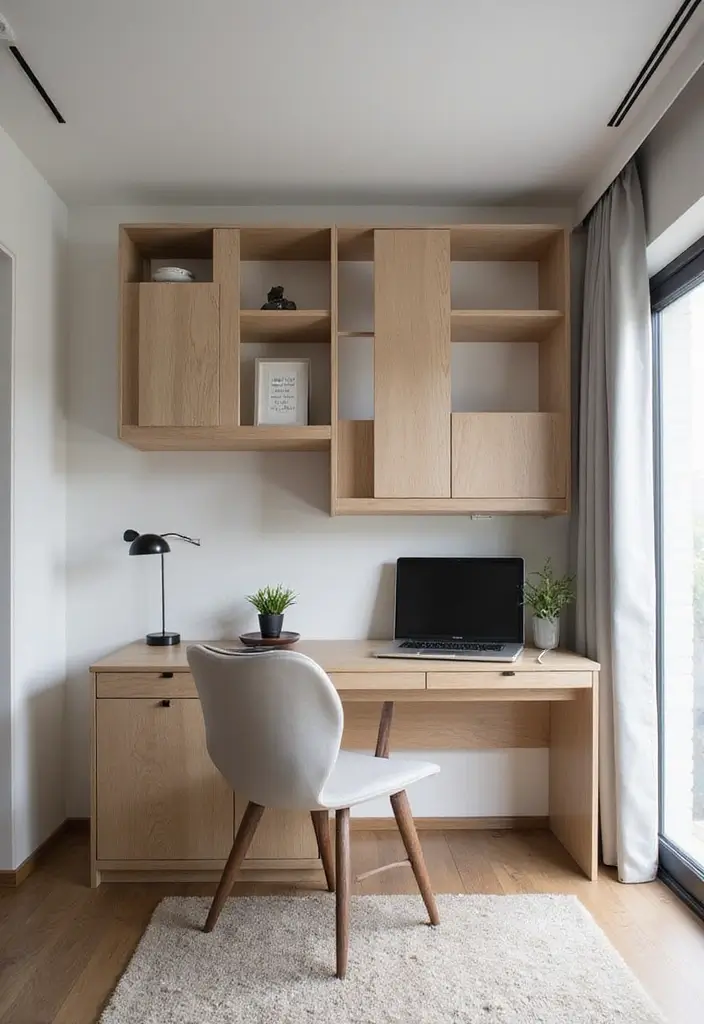
In the age of tiny homes and urban living, creating multi-functional spaces has become essential. A minimalist approach allows for rooms that serve multiple purposes—think a home office that doubles as a guest room. By selecting versatile furniture, like a Murphy bed that can easily transform a space, you can adapt your home to fit your needs without sacrificing style or functionality.
For instance, the Merax queen size murphy bed is an excellent solution, offering a space-saving design and additional storage shelves, making it perfect for both a bedroom and a guest room. Additionally, consider incorporating a foldable desk to maximize your workspace. The TEMI small computer desk has a compact design and requires no assembly, making it an ideal fit for small spaces like a bedroom, dorm, or apartment.
To keep your multi-functional rooms organized, built-in storage solutions are key. The Sterilite 4 shelf cabinet offers adjustable shelves and a lockable design, making it excellent for organizing everything from a garage to a laundry room.
Here are some tips to master the concept of multi-functional spaces:
– Use built-in storage solutions to declutter.
– Opt for furniture that can be easily moved or rearranged.
– Choose a color scheme that remains cohesive throughout the space.
Multi-functional designs embody the essence of sustainable living by maximizing every square foot of your home. In a world where space is limited, a minimalist home plan with multi-functional rooms is a game changer! Embrace versatility—your home can be your office, guest room, and sanctuary all at once.
4. Minimalist Kitchen Designs

The kitchen is often the heart of the home, and minimalist designs encourage functionality with style.
Picture a clean, clutter-free kitchen with sleek cabinetry, integrated appliances, and a focus on quality over quantity. Sustainable materials such as bamboo countertops or reclaimed wood can add warmth while being eco-friendly. Here’s how to create the perfect minimalist kitchen:
– Prioritize open shelving for easy access while minimizing visual clutter. Consider adding open shelving units like the NUMENN Bookshelf, which not only provide storage but also enhance the aesthetic of your kitchen by keeping it airy and organized.
– Invest in energy-efficient appliances that blend seamlessly into cabinetry.
– Keep countertops bare except for a few chosen decorative pieces.
This style not only enhances cooking efficiency but also creates a tranquil environment.
5. Calm Bedroom Retreats
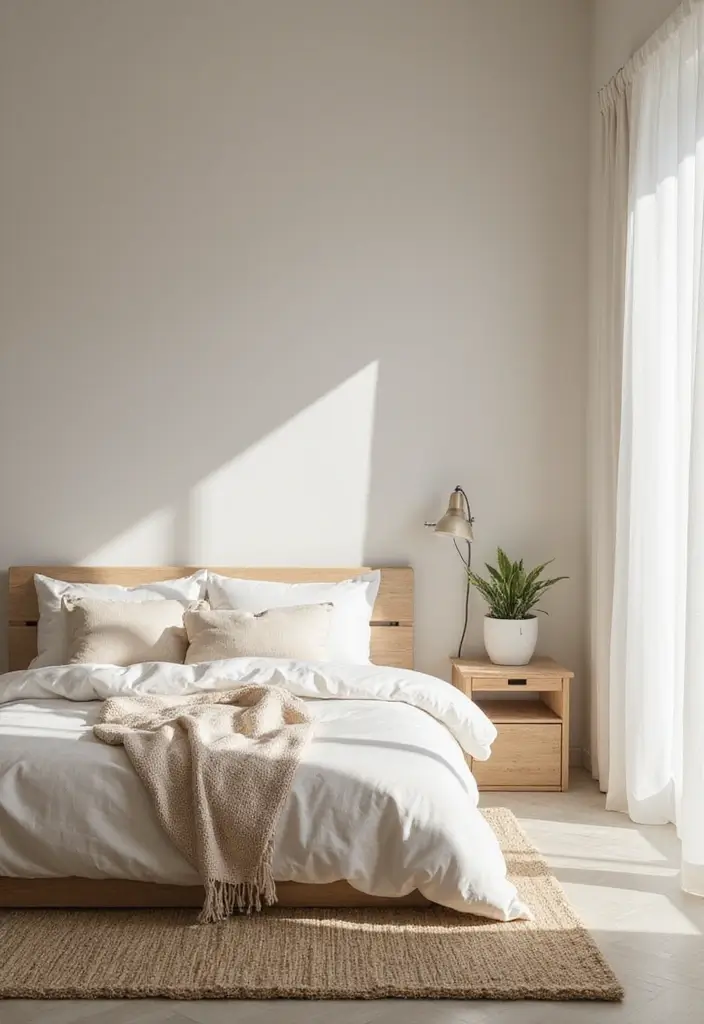
A bedroom should be a sanctuary, and minimalist designs promote relaxation through simplicity.
Opt for a neutral palette, soft textiles, and minimal decor to create a calming space that encourages restful sleep.
Consider multi-functional furniture, like a platform bed with storage drawers, to keep clutter at bay.
Here are some ideas for a peaceful minimalist bedroom:
– Use a monochromatic color scheme to unify the space.
– Incorporate soft lighting with dimmable options for ambiance.
– Limit decor to a few cherished pieces that bring joy.
With these elements, your bedroom can become a serene retreat, promoting not only restful nights but also a healthier lifestyle.
6. Sustainable Materials and Finishes
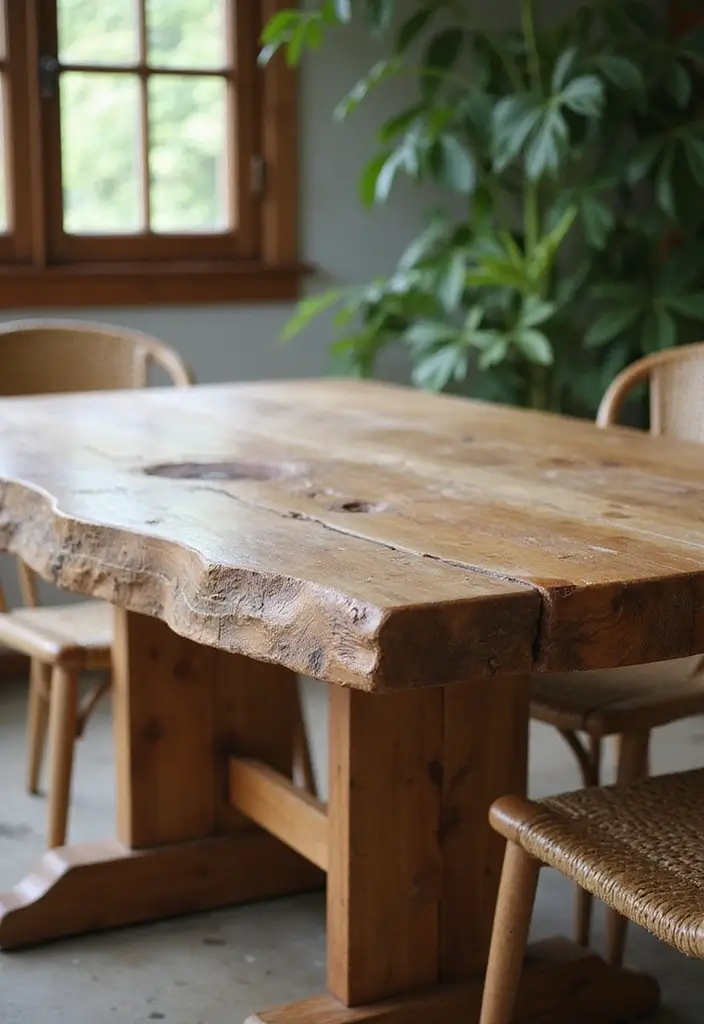
Sustainability is a significant aspect of minimalist design, and selecting the right materials can make a big difference. From reclaimed wood to recycled glass, the options for environmentally friendly materials are endless. These materials not only reduce environmental impact but also add character to your home.
Consider these tips when choosing sustainable finishes:
– Look for non-toxic paints and finishes that are low in VOCs. For example, ABEIER washable finger paint for toddlers is a great option. Although designed for kids, it’s safe and low in VOCs, making it perfect for homes focused on sustainability.
– Incorporate natural fibers in rugs and fabrics for a cozy feel.
– Choose furniture made from sustainably sourced wood.
By prioritizing sustainable materials, you not only create a beautiful space but contribute positively to the environment.
Choosing sustainable materials is not just a trend; it’s a lifestyle. Every eco-friendly choice adds character to your minimalist home plan while helping the planet thrive!
7. Simplified Lighting Solutions
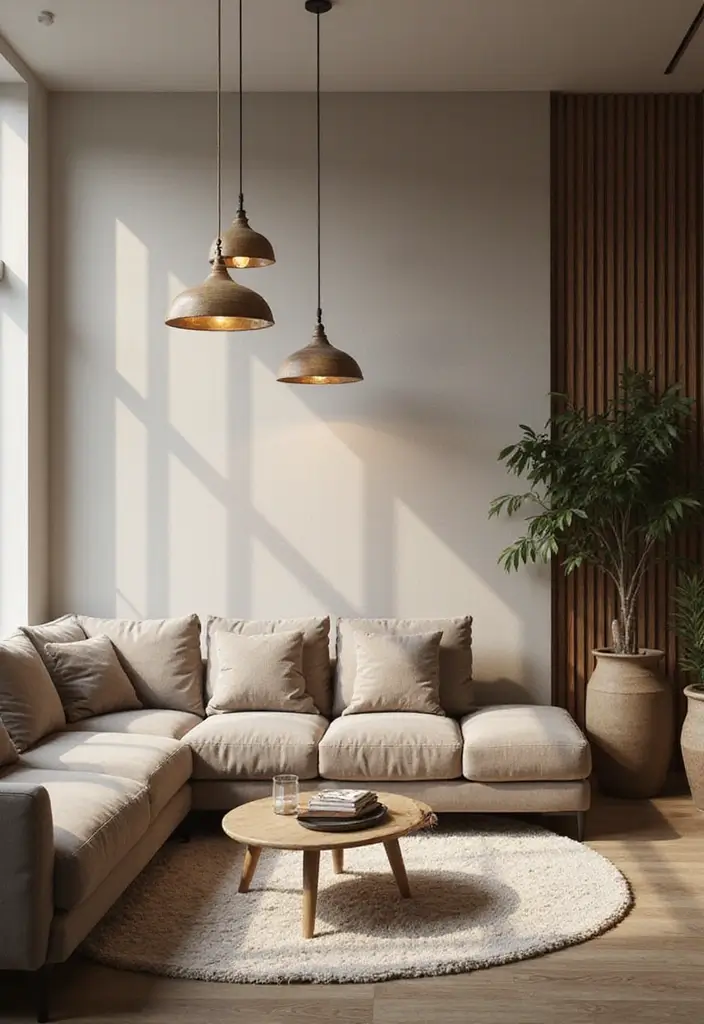
Lighting plays a crucial role in minimalist design, impacting mood and functionality. Opt for fixtures that are not only stylish but also energy-efficient, such as LED lights or solar-powered options. A great example is the 3-Pack Black Pendant Light Fixtures. These adjustable modern pendant lights work beautifully over dining areas or kitchen islands, adding a contemporary touch while providing functional illumination.
Layering light sources—ambient, task, and accent—can enhance the overall design while ensuring practicality. To further enhance your space, consider incorporating large windows to maximize natural light during the day. Additionally, choosing dimmers can provide flexibility in setting the mood for different occasions.
Well-planned lighting solutions can help create the perfect ambiance while beautifying spaces. Remember, lighting can transform your minimalist home plan; think energy-efficient fixtures and natural light to create a warm, inviting space. Illuminate with intention and watch your home come alive!
8. Clutter-Free Zones
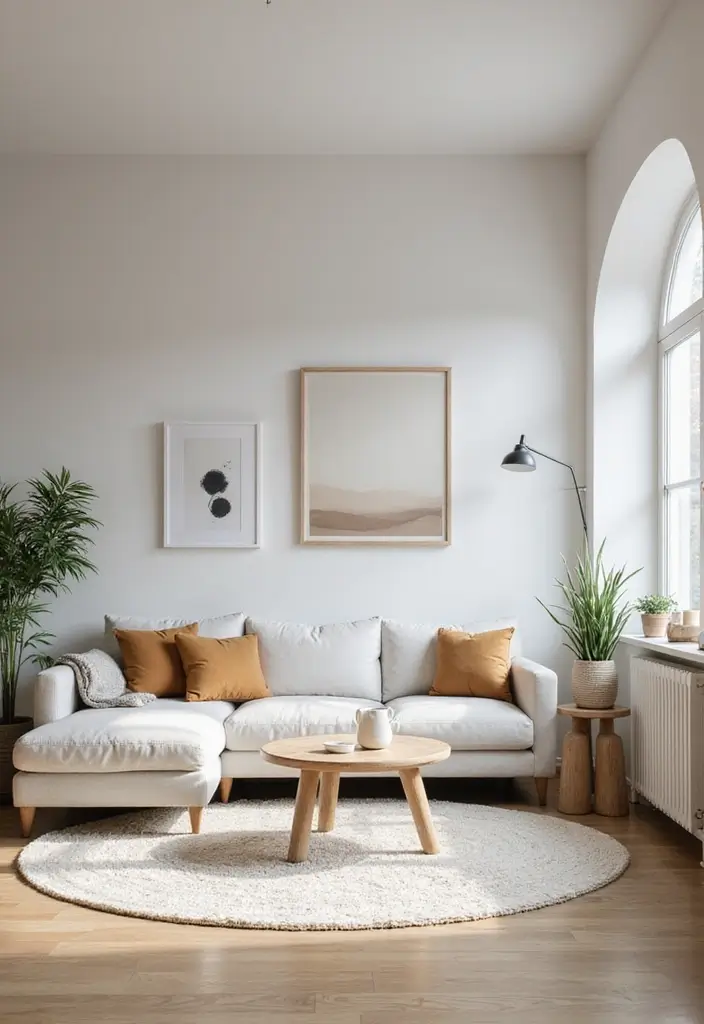
Creating clutter-free zones is essential in any minimalist home plan, promoting calmness and organization. Dedicating specific areas for different activities—like reading, work, or relaxation—helps maintain focus and tranquility.
Utilizing clever storage solutions, such as hidden cabinets or decorative baskets, can aid in this endeavor. For instance, wall-mounted shelves are a fantastic option to help you make the most of vertical space. These black wood floating shelves not only keep your floors clear but also add a rustic touch to your decor. They provide the perfect platform for displaying a few carefully selected items or keeping books and materials organized.
Here are some tips to establish clutter-free zones:
– Regularly assess belongings to determine what truly adds value.
– Set boundaries on what can be displayed in each area.
– Make use of vertical space for storage to keep floors clear.
By establishing clutter-free zones, you cultivate a sense of peace and structure within your home.
A clutter-free zone sparks clarity! Dedicate spaces for tasks you love, and watch your focus flourish in your minimalist home plan.
9. Nature-Inspired Decor
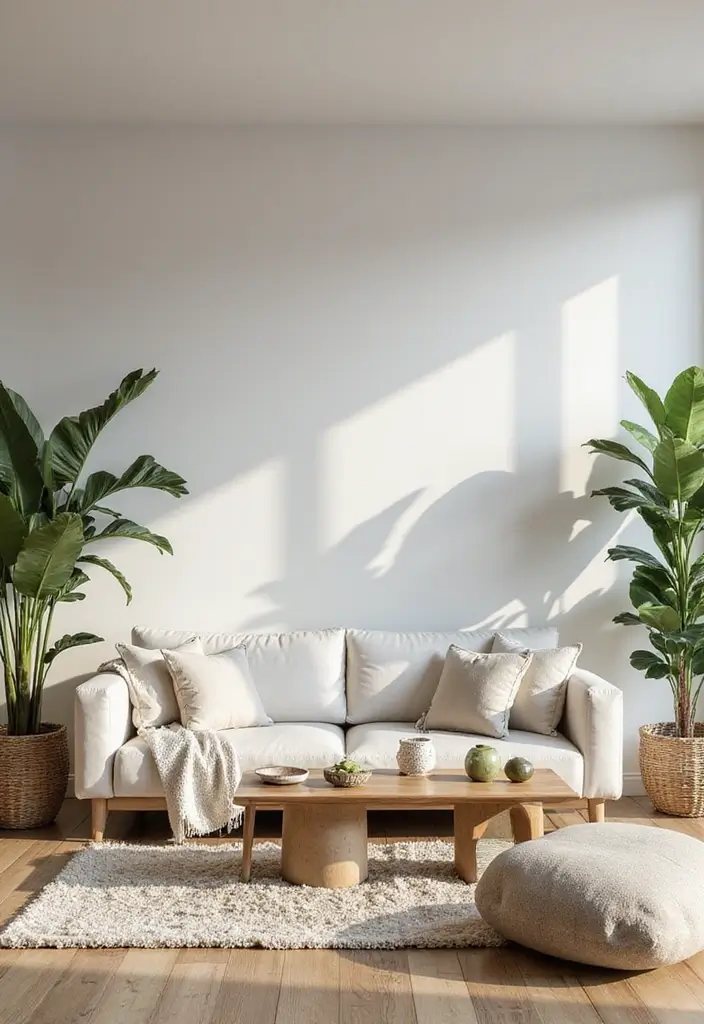
Minimalist home decor often draws inspiration from nature, creating a calming and refreshing atmosphere. Incorporating natural elements like indoor plants, stone accents, or wood finishes helps to bring the outdoors inside. For instance, adding decorative pieces such as the natural wood decor accents can enhance your space with organic shapes and textures, making it feel more grounded. These wood-carved onlays can be beautifully used to refurbish furniture or as accents on walls, cabinets, and doors, providing a warm touch that blends seamlessly with nature-inspired themes.
A few additional decor tips include:
– Use plants to purify the air and add life to your space.
– Keep decorative items to a minimum to avoid overwhelming the senses.
By using nature-inspired decor and thoughtful pieces like the natural wood decor accents, you can create a harmonious space that feels both peaceful and inviting.
10. Personalized Yet Minimalist
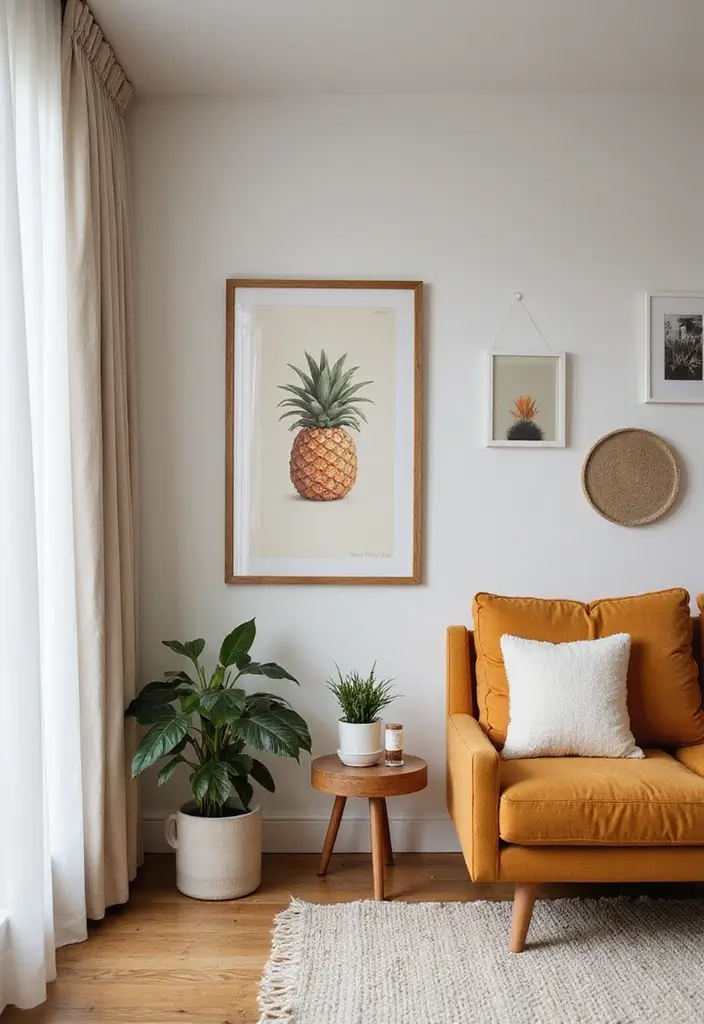
While minimalism focuses on simplicity, it doesn’t mean you have to sacrifice your personal style. Incorporating elements that reflect who you are—such as a favorite artwork, a cherished artifact, or a family heirloom—can add character without cluttering your space.
For instance, consider adding a piece like PHOPAGO minimalist abstract framed wall art to your walls. This artwork can serve as a striking focal point while maintaining a clean aesthetic.
The key is to choose pieces that resonate with you and serve a purpose. Limit personal items to a few favorites that tell your story and think about utilizing decor that reflects your personality, like color accents. You might find that decorative storage boxes with lovely design can help you keep your space organized while providing a touch of style. These can store small items out of sight, helping to maintain that minimalist vibe.
Additionally, allowing for flexibility in your design—such as changing decor seasonally or as your tastes evolve—can keep your home feeling fresh. Incorporating items like accent throw pillows can be an easy and inexpensive way to introduce new textures or colors to your space, reflecting the changing seasons or your mood.
This personalized minimalist approach ensures that your home remains a true reflection of you while maintaining a clean and uncluttered design.
Conclusion
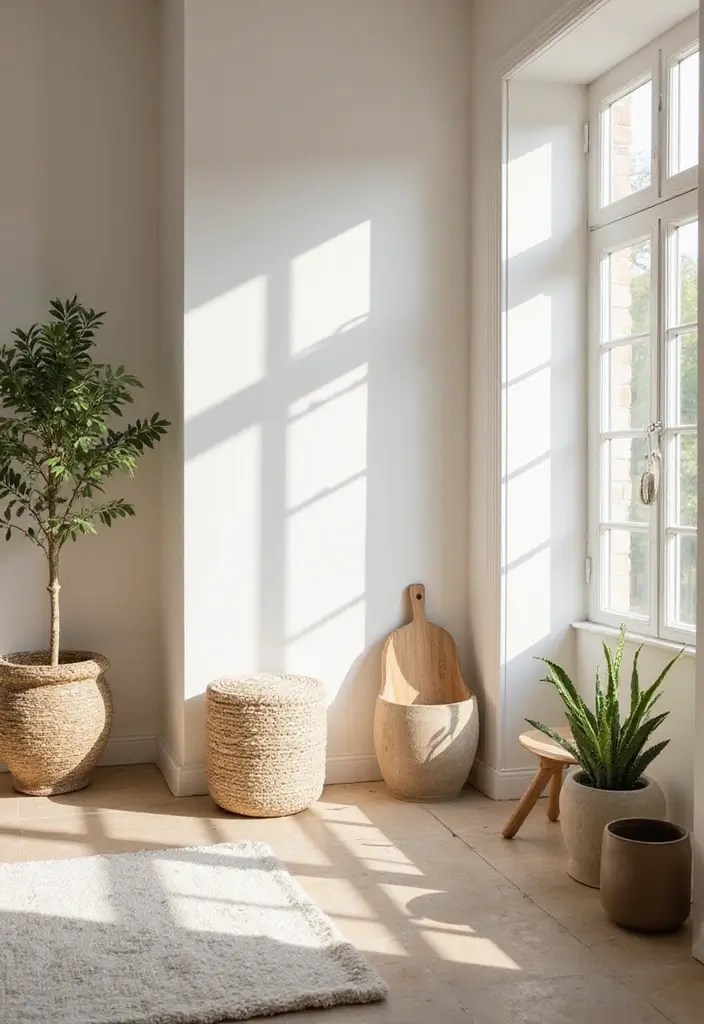
Adopting a minimalist lifestyle within your home can lead to more than just a visually appealing space; it fosters tranquility, sustainability, and a sense of purpose.
As you explore these minimalist home plan inspirations, consider how each design element can contribute to a more harmonious living experience.
Your home can be both beautiful and functional, promoting a lifestyle that values simplicity and sustainability.
Note: We aim to provide accurate product links, but some may occasionally expire or become unavailable. If this happens, please search directly on Amazon for the product or a suitable alternative.
This post contains Amazon affiliate links, meaning I may earn a small commission if you purchase through my links, at no extra cost to you.
Frequently Asked Questions
What are the key features of a minimalist home plan?
A minimalist home plan typically emphasizes simplicity and functionality. Key features include an open concept layout that encourages seamless flow between spaces, multi-functional rooms to maximize utility, and clutter-free zones that promote organization and tranquility. Additionally, using sustainable materials and space-saving furniture aligns with the minimalist philosophy, making your home both beautiful and eco-friendly.
How can I incorporate sustainable practices into my minimalist home design?
Incorporating sustainability into your minimalist home design can be achieved by choosing eco-friendly materials, such as reclaimed wood or recycled finishes. Additionally, focus on energy-efficient appliances and natural light to reduce energy consumption. Opt for space-saving furniture that serves multiple purposes, allowing you to maintain a minimalist aesthetic while supporting a sustainable lifestyle.
What are some tips for creating a calming bedroom retreat in a minimalist home?
To create a calming bedroom retreat, start with a neutral color palette and soft textiles that promote relaxation. Limit decor to a few personal touches that reflect your style, like a favorite piece of art or a cherished artifact. Incorporate nature-inspired decor, such as indoor plants or wooden accents, to bring a sense of serenity to the space. Remember, the goal is to keep the environment tranquil and clutter-free, encouraging restful sleep.
What are the benefits of an open concept living space in minimalist design?
An open concept living space enhances the flow between different areas of your home, making it feel larger and more connected. This design encourages social interaction and family bonding, as spaces like the kitchen, dining, and living areas blend seamlessly. Moreover, it allows for more natural light to circulate, creating a warm and inviting atmosphere. Embracing this layout aligns perfectly with the principles of minimalist interior design.
How can I personalize my minimalist home without cluttering the space?
Personalizing your minimalist home is all about choosing meaningful and intentional decor. Select a few items that truly resonate with you, like a cherished artwork or a unique piece of furniture. Use nature-inspired elements, such as plants or natural materials, to add warmth without overwhelming the space. Remember, less is more; focus on quality over quantity to maintain a minimalist aesthetic while reflecting your personal style.


